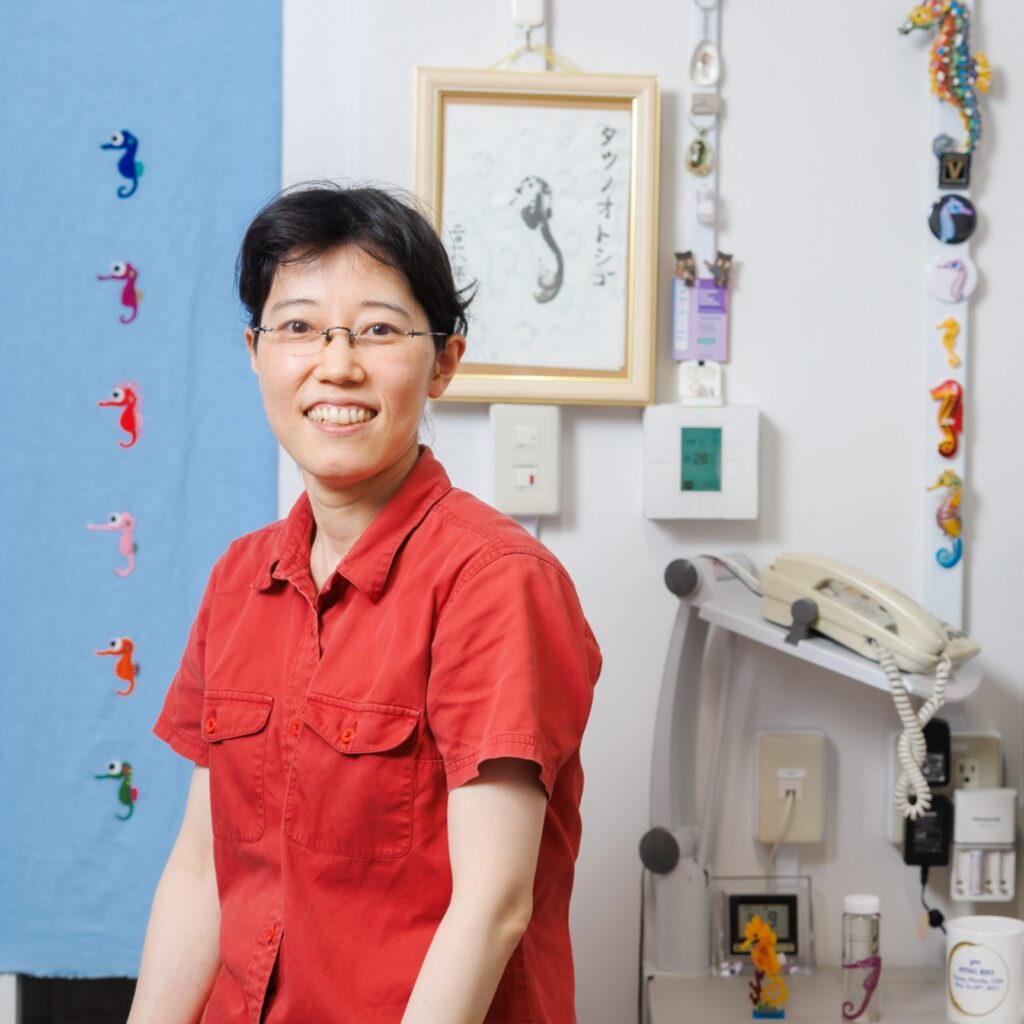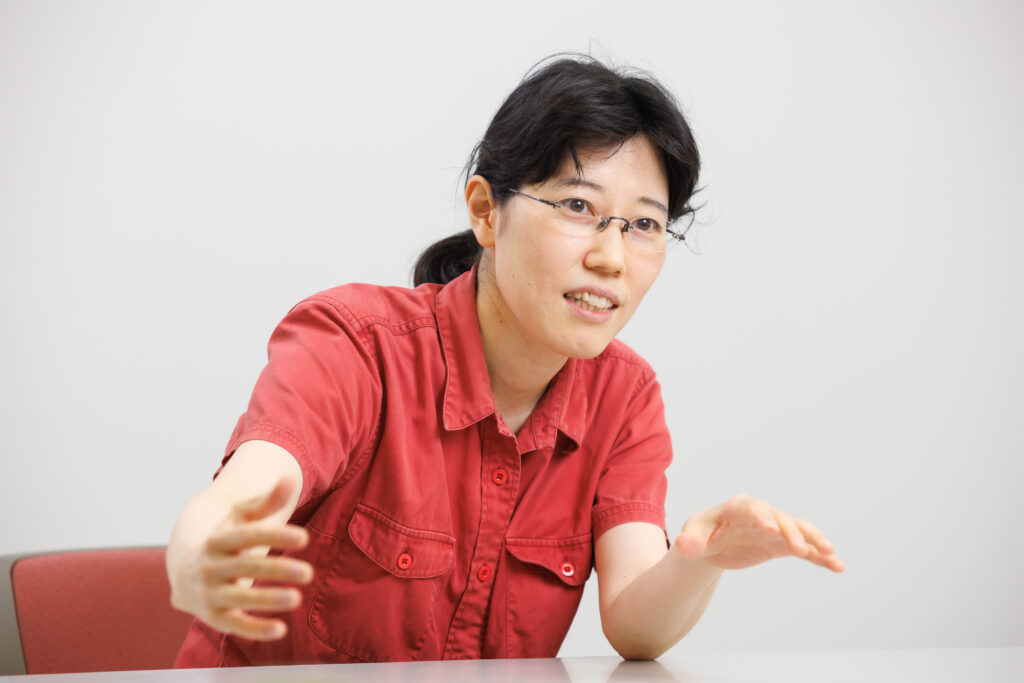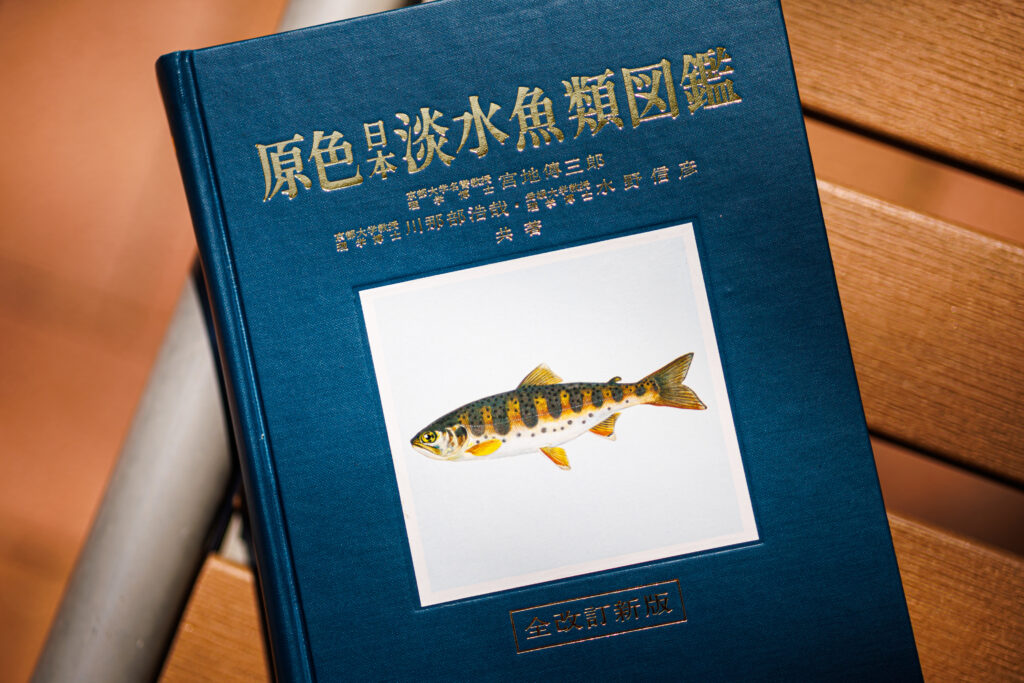
Seahorses are well known for the fact that the male of the species gives birth. Associate Professor Mari Kawaguchi of the Faculty of Science and Technology is researching the evolution of an organ known as the “brood pouch,” which plays an important role in the reproductive activities of these creatures.
When you read papers and data related to your field of specialization on a daily basis, you sometimes come across topics little-studied by other researchers. For me, that topic was seahorses.
I was previously researching hatching in fish. While the majority of fish hatch their eggs externally, seahorses hatch their eggs in a brood pouch—an organ that only the male of the species has. I found this fascinating. When I studied the literature on these brood pouches, there was almost no research concentrated on genetic levels —so, I decided to carry this research out myself.
My line of thinking was this: since the seahorse is such a unique species of fish, there must be some genes that only seahorses possess. In fact, I found such cells and genes that were unique to seahorses, and they had been newly created as part of the evolutionary process.
The mysterious properties of the brood pouch

The brood pouch, as its name suggests, is an organ for nurturing larvae. In mammals, similar pouches are also found in kangaroos and koalas, but in fish, they are only found in restricted species, such as males in the family Syngnathidae—a family that includes seahorses, pipefish, and seadragons.
The shape of these brood pouches varies from species to species; in fish, only seahorses have a bag-shaped brood pouch that completely covers their eggs. The female seahorse deposits eggs into the male’s brood pouch; the male then fertilizes these eggs, nurtures them until they become larvae, then expels them into the sea. This process is identical to giving birth.
At present, my research centers on analyzing both the development of the brood pouch and its evolution. It is an organ about which many characteristics are still unknown. In addition to protecting the eggs, it has also been reported that the brood pouch supplies them with nourishment. In fact, there are distinct similarities between the roles played by seahorse brood pouches and by mammalian placentas.
Naming a digestive enzyme I discovered
There are times during the research process when you appear to be going nowhere. On such occasions, I turn my attention to another theme of research; I blocked this original research topic in the corner of my mind, making sure to think about it periodically. In my experience, as I continue my investigations, there suddenly comes a point at which the original questions have been resolved.
For example, there was a gene I had discovered during my post-grad days, whose function I was unable to work out; then, two years ago, I realized that it related to a digestive enzyme found in fish. Since I had discovered it, the choice of name was mine—and I chose the name “pactacin.” It took almost 15 years, but I was delighted when I made this realization—and being able to name the new enzyme was my reward.
There are many facts we still don’t understand about seahorses. However, by piecing together various fragments of knowledge, we are gradually forming a clearer picture. Much of the research that takes place today is only possible thanks to the knowledge accumulated by past researchers; in the same way, the discoveries I have made will form the basis for future research which, in turn, will spawn new discoveries.
Research has various goals, but I believe that accumulating greater knowledge is, in and of itself, a meaningful goal.
The book I recommend
“Genshoku Nihon Tansuigyo Zukan (Genshoku Picture Book of Japanese Freshwater Fish)”
by Denzaburo Miyaji et al., Hoikusha

I have been fascinated by animals ever since I was a child. My parents bought this picture book for me when I was an elementary school student. I liked the accurate illustrations it contained, and the fact I remembered the order of the table of contents subsequently helped me in my research on the evolution of fish.
-
Mari Kawaguchi
- Associate Professor
Department of Materials and Life Sciences
Faculty of Science and Technology
- Associate Professor
-
Received her M.A. in Chemistry from the Graduate School of Science, Tokyo Metropolitan University, and her Ph.D. in biological science from the Graduate School of Science and Technology, Sophia University. After working as a post-doctoral fellow (as the Japan Society for the Promotion of Science Research Fellowship for Young Scientists) at the Atmosphere and Ocean Research Institute (AORI), The University of Tokyo, Kawaguchi worked as an assistant professor at the Faculty of Science and Technology, Sophia University, and was promoted to her current position in 2016.
- Department of Materials and Life Science
Interviewed: August 2022